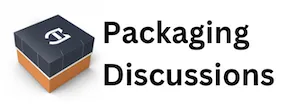Table of Contents:
Understanding the Key Audiences for Packaging and Stationery Catalogues
Understanding the Key Audiences for Packaging and Stationery Catalogues
Identifying who actually benefits from packaging and stationery catalogues is, well, more nuanced than it first appears. Sure, you might think it’s just office managers or school secretaries flipping through glossy pages, but the reality is far richer. Let’s dig a little deeper into the unique user groups that drive demand and innovation in this space.
- Corporate Procurement Teams: These folks aren’t just buying pens and folders—they’re searching for reliable supply chains, bulk discounts, and eco-friendly options that align with company policies. They want catalogues that make large-scale ordering seamless and provide transparent product specs, certifications, and availability.
- Educational Administrators: From primary schools to universities, decision-makers need catalogues that cater to diverse classroom needs, from specialized art supplies to ergonomic furniture. They look for age-appropriate product groupings, safety certifications, and, sometimes, customization for institutional branding.
- Creative Professionals: Designers, artists, and makers crave inspiration and high-quality materials. They use catalogues not just to order, but to spark ideas for projects, discover new brands, and compare specialty items that aren’t available in standard retail stores.
- Facility and Operations Managers: Beyond paper and pens, these users require catalogues that include cleaning supplies, organizational tools, and safety products. Integration of these categories is a huge time-saver for anyone managing multi-faceted environments.
- Small Business Owners and Startups: For those wearing many hats, catalogues serve as a roadmap to set up an efficient workspace, often with starter kits or curated bundles that take the guesswork out of procurement.
- Remote Workers and Home Offices: With flexible work on the rise, individuals need catalogues that offer compact, stylish, and practical solutions—think space-saving storage, portable tech accessories, and personal planners.
What’s fascinating is how each group brings its own set of priorities—be it sustainability, cost, design, or convenience. A truly great catalogue doesn’t just list products; it anticipates these varied needs and curates its offering accordingly. That’s the secret sauce behind the most effective packaging and stationery catalogues today.
Comprehensive Product Range: What to Expect Inside
Comprehensive Product Range: What to Expect Inside
Cracking open a modern packaging and stationery catalogue, you’ll quickly notice the scope is, well, pretty staggering. It’s not just about paperclips and envelopes anymore. These catalogues have evolved into all-in-one guides, often surprising even seasoned buyers with their depth and breadth.
- Specialized Adhesives and Tapes: From industrial-strength bonding agents to repositionable tapes for creative projects, expect a selection tailored to both everyday fixes and niche requirements.
- Artistic and Crafting Supplies: Think beyond the basics—catalogues now feature premium sketchbooks, textured canvases, professional-grade markers, and even modeling materials. Perfect for anyone who wants to go a bit wild with their next creative endeavor.
- Organizational Tools: Modular storage systems, stackable trays, and smart filing solutions pop up frequently. Some catalogues even highlight eco-friendly or recycled options, catering to sustainability-conscious users.
- Presentation and Display Essentials: You’ll find everything from magnetic whiteboards to sleek presentation folders and digital signage accessories. It’s all about making your ideas stand out, whether in a boardroom or a classroom.
- Tech and Workspace Accessories: Expect to stumble upon ergonomic mouse pads, laptop stands, and cable management kits—little details that can make a big difference in daily productivity.
- Facility and Safety Items: The range often extends to first-aid kits, signage, and even air purifiers. These additions reflect the changing needs of modern workspaces, where health and safety are top priorities.
What really sets the best catalogues apart is their ability to group these diverse products intuitively. No more hunting through endless pages—categories are usually smartly organized, so you can jump straight to what you need, or discover something unexpected along the way. It’s this mix of depth, relevance, and clever curation that makes a comprehensive catalogue an indispensable tool for so many different users.
Pros and Cons of Packaging and Stationery Catalogues
| Pros | Cons |
|---|---|
| Wide product range with intuitive grouping for quick navigation and efficient selection. | Can be overwhelming for new users due to the breadth and depth of available items. |
| Includes value-added services like personalized consultation, custom quotations, and automated reordering. | Advanced features (live inventory, order analytics) may require digital literacy and training. |
| Offers trusted brands and niche suppliers, allowing easy comparison and exclusive catalogue editions. | Niche or exclusive products might have limited availability or longer shipping times. |
| User-friendly structure with logical segmentation, search functions, and consistent product information. | Printed catalogues can quickly become outdated as new products or services are introduced. |
| Centralized procurement and reporting help organizations save time and optimize budgets. | Smaller businesses or individuals may find some catalogue tools geared more toward larger organizations. |
| Enhances operational efficiency and supports compliance through automated approval workflows. | Integration with internal systems may need additional technical support or upgrades. |
| Accessibility features and responsive design ensure inclusivity for all user groups. | Not all catalogues offer full multilingual or accessibility options, limiting use in some environments. |
Leading Brands and Diverse Choices in Modern Catalogues
Leading Brands and Diverse Choices in Modern Catalogues
Modern packaging and stationery catalogues are not just about variety—they’re about trust and quality. The presence of established brands alongside emerging names gives buyers both reassurance and the thrill of discovery. This blend isn’t accidental; it’s a strategic move to cover every possible preference and requirement.
- Trusted Industry Leaders: Catalogues frequently showcase globally recognized brands known for reliability and innovation. These names set the benchmark for durability, design, and environmental responsibility.
- Specialty and Niche Brands: It’s not all about the big players. Many catalogues highlight boutique or niche suppliers offering unique features, limited editions, or artisanal craftsmanship. This opens doors for users seeking something out of the ordinary.
- Comparative Shopping Made Easy: With side-by-side listings, buyers can quickly weigh price, features, and reviews. This transparency empowers smarter decisions and reduces the risk of buyer’s remorse.
- Exclusive Catalogue Editions: Some catalogues even include products or bundles you won’t find anywhere else—think limited-run collaborations or value packs tailored for catalogue customers.
What’s striking is the way catalogues balance breadth and depth. You get the classics, the innovators, and the hard-to-find gems, all curated for quick comparison. This diversity isn’t just a nice-to-have; it’s a real competitive edge for anyone looking to equip their workspace with confidence and flair.
Exclusive Services and Value-Added Solutions for Buyers
Exclusive Services and Value-Added Solutions for Buyers
Buyers today expect more than just a product list—they want real support and tailored solutions that make procurement easier and smarter. Modern catalogues step up with a range of exclusive services designed to add genuine value at every stage of the buying process.
- Personalized Consultation: Dedicated account managers or product experts are often available to guide buyers through complex selections, recommend alternatives, or help with bulk and custom orders. This hands-on approach saves time and minimizes costly mistakes.
- Custom Quotation Tools: Advanced catalogues provide instant quote generators for large or recurring orders, making budgeting and approval cycles much faster. Some even allow direct integration with company procurement systems for seamless workflow.
- Sample and Trial Programs: For high-value or specialized items, buyers can request samples or short-term trials before committing. This try-before-you-buy model is especially useful for new product lines or innovative materials.
- Automated Reordering and Subscription Services: Never run out of essentials again—catalogues increasingly offer automated restocking or subscription plans tailored to your consumption patterns, ensuring uninterrupted supply without manual tracking.
- Exclusive Educational Content: Some catalogues go the extra mile by offering webinars, how-to guides, or interactive tools that help buyers stay informed about trends, compliance, and best practices in packaging and stationery management.
These services aren’t just bells and whistles—they’re strategic advantages that streamline procurement, boost efficiency, and help buyers stay ahead in a fast-changing market.
User-Friendly Structure: Navigating and Utilizing Catalogues Effectively
User-Friendly Structure: Navigating and Utilizing Catalogues Effectively
Getting lost in a catalogue? Not if it’s built right. The best catalogues put intuitive navigation front and center, transforming what could be a maze into a streamlined experience. Clear, logical layouts—often with visual cues and smart grouping—make finding even obscure items surprisingly straightforward.
- Logical Category Segmentation: Products are grouped by purpose, usage scenario, or user type, so you don’t waste time wading through irrelevant sections. This segmentation is especially helpful for first-time buyers or those with specific, targeted needs.
- Dynamic Indexing and Search: Many catalogues feature interactive or hyperlinked indexes, letting users jump directly to a section or product. This cuts down on page-flipping and boosts efficiency, especially in digital formats.
- Consistent Product Presentation: Uniform layouts for product entries—complete with specs, images, and quick-glance icons—make comparison and selection a breeze. No more deciphering cryptic codes or inconsistent info.
- Integrated Support Features: Some catalogues weave in instant chat, FAQ links, or contact prompts right where you need them, so help is always at hand without breaking your flow.
In short, a well-structured catalogue isn’t just about aesthetics—it’s a practical tool that saves time, reduces frustration, and helps you make confident, informed choices with minimal hassle.
Real-World Example: Efficient Procurement for Businesses and Schools
Real-World Example: Efficient Procurement for Businesses and Schools
Imagine a mid-sized company and a local school district both facing the annual challenge of restocking their supplies. Each has a long list—think everything from specialized mailing materials to classroom essentials. Here’s how a well-designed catalogue can turn this logistical headache into a smooth, almost enjoyable process.
- Centralized Ordering: Both organizations leverage the catalogue’s centralized platform to consolidate all their needs into a single order. This means fewer invoices, streamlined approvals, and less back-and-forth with multiple vendors.
- Pre-Configured Lists: The procurement team at the business uses saved order templates, while the school district benefits from curated supply bundles tailored to grade levels or departments. This eliminates repetitive manual entry and ensures nothing gets overlooked.
- Live Inventory Updates: Instead of discovering out-of-stock items after checkout, both users see real-time availability. This allows for quick substitutions or adjustments, reducing delivery delays and frustration.
- Role-Based Access: Different staff members have custom permissions—teachers can request classroom items, while finance managers approve final orders. This keeps the process secure and transparent, avoiding unauthorized purchases.
- Automated Reporting: At the end of the quarter, both the business and the school generate instant usage and spend reports directly from the catalogue system. This data helps them forecast future needs and optimize budgets.
By integrating these features, the catalogue doesn’t just supply products—it becomes a strategic procurement tool, saving time, reducing errors, and supporting smarter resource management for organizations of any size.
Maximizing Benefits: How to Streamline Selection and Ordering
Maximizing Benefits: How to Streamline Selection and Ordering
Efficiency isn’t just a buzzword—it’s the real currency when it comes to packaging and stationery procurement. To truly get the most out of your catalogue experience, a few smart strategies can make all the difference.
- Leverage Advanced Filtering: Use multi-criteria filters—such as eco-certifications, delivery times, or compatibility with existing equipment—to instantly narrow down choices and avoid sifting through irrelevant options.
- Utilize Product Comparison Tools: Many catalogues offer side-by-side comparison features. This lets you weigh specifications, pricing, and user ratings in one view, making complex decisions much faster and more transparent.
- Set Up Automated Approval Workflows: For organizations, integrating catalogue ordering with internal approval chains ensures compliance and eliminates bottlenecks. This way, orders move forward without endless email threads or missed signatures.
- Take Advantage of Order History and Analytics: Reviewing past purchases and analyzing usage trends helps predict future needs, prevents over-ordering, and can even reveal opportunities for bulk discounts or supplier negotiations.
- Customize Delivery Preferences: Some catalogues allow you to schedule deliveries, split shipments, or choose sustainable packaging. Tailoring these options reduces disruptions and aligns procurement with your operational rhythms.
Adopting these tactics transforms catalogue shopping from a routine task into a strategic advantage—saving time, reducing waste, and giving you the upper hand in both cost and convenience.
Conclusion: Why a Well-Designed Packaging and Stationery Catalogue is Essential
Conclusion: Why a Well-Designed Packaging and Stationery Catalogue is Essential
A thoughtfully constructed catalogue does more than organize products—it becomes a catalyst for innovation and growth within organizations. When catalogues incorporate predictive analytics, they empower buyers to anticipate trends and respond proactively to changing demands. This foresight is especially crucial in fast-moving sectors where timing and adaptability directly impact success.
Moreover, catalogues that integrate with digital procurement platforms facilitate seamless collaboration between departments and external partners. This interconnectedness not only accelerates decision-making but also fosters transparency and accountability throughout the supply chain.
Finally, a catalogue that prioritizes accessibility—offering multilingual support, responsive design for mobile devices, and compliance with accessibility standards—ensures that every stakeholder, regardless of role or ability, can participate fully in the procurement process. In a landscape where inclusivity and agility are non-negotiable, these features transform a simple catalogue into a strategic asset.
Frequently Asked Questions About Packaging and Stationery Catalogues
What types of products are typically included in a packaging and stationery catalogue?
A modern packaging and stationery catalogue features a broad range of products—from adhesives, tapes, classic office supplies, organizational tools, and storage solutions to artist materials, school essentials, presentation equipment, technology accessories, and even cleaning or safety items.
Who can benefit from using these catalogues?
These catalogues serve a wide audience, including businesses, educational institutions, creative professionals, facility managers, small business owners, and remote workers—anyone needing reliable, high-quality office and creative supplies.
What value-added services do packaging and stationery catalogues often offer?
Many catalogues provide exclusive services such as personalized consultation, custom quotations, automated ordering, sample programs, live inventory updates, comprehensive reporting, and educational resources like webinars or guides.
How are the catalogues typically structured to improve user experience?
Top catalogues are organized into clear categories with logical navigation, search functions, interactive indexes, and consistent product details, making it easy for users to find, compare, and select products efficiently.
What are the key benefits of using a comprehensive packaging and stationery catalogue?
A well-designed catalogue saves time through centralized procurement, supports budget management, offers access to trusted and specialized brands, streamlines reordering, and delivers a one-stop solution for all workspace and creative needs.






